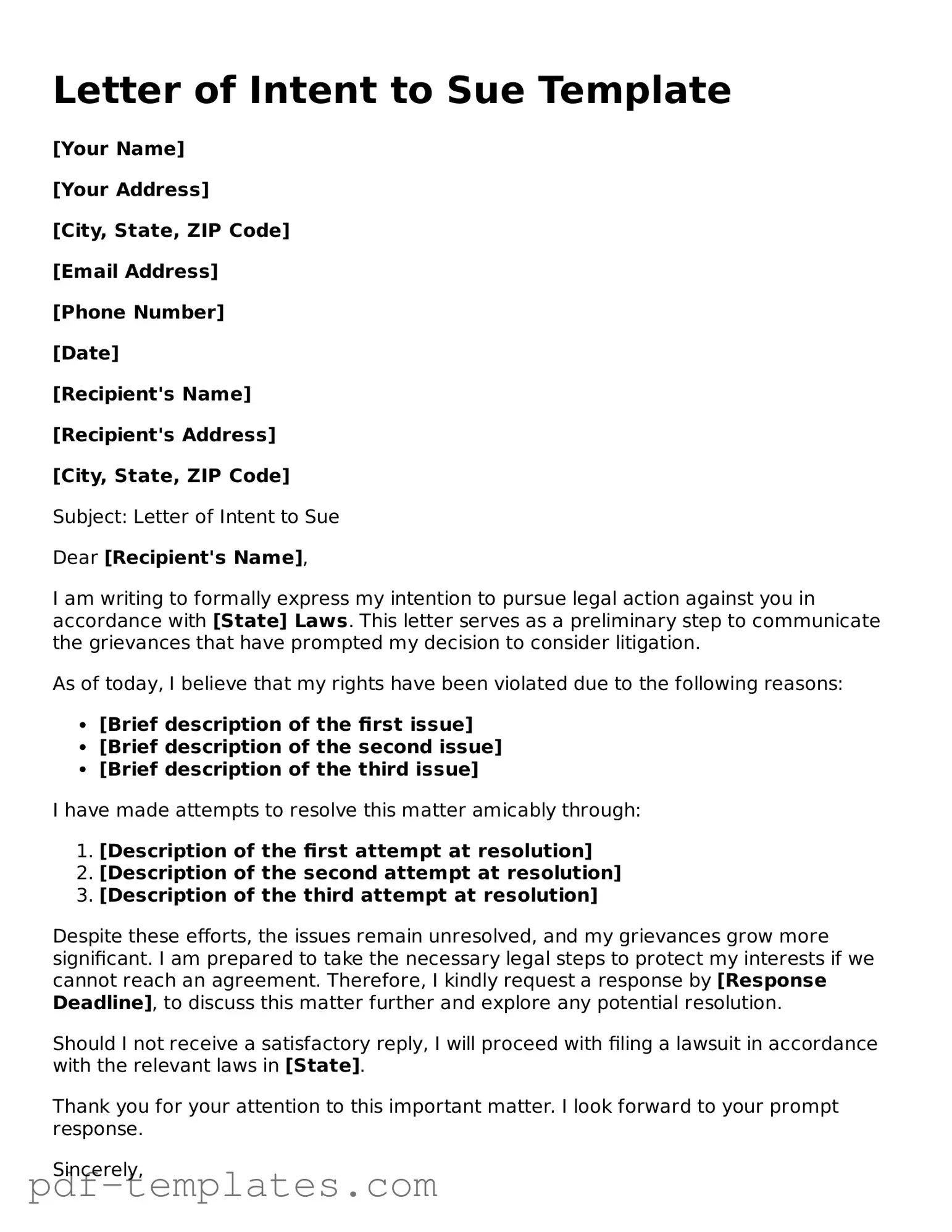The Letter of Intent to Sue is often compared to a Demand Letter. A Demand Letter serves as a formal request for payment or action before legal proceedings begin. Like the Letter of Intent to Sue, it outlines the grievances and the desired resolution. However, a Demand Letter usually emphasizes negotiation and settlement, aiming to resolve the issue without escalating to court. Both documents signal that the sender is serious about their claims and is prepared to take further action if necessary.
For those considering homeschooling in Arizona, it’s crucial to familiarize yourself with the necessary documentation, such as the Arizona Homeschool Letter of Intent. This document not only signifies your decision to educate your children at home but also ensures compliance with state regulations. To streamline the process and avoid any misunderstandings, click here for guidance on completing this important form.
Another similar document is the Notice of Claim. This document is typically used in situations involving government entities. A Notice of Claim informs the government of an impending lawsuit and provides them with an opportunity to address the issue before formal legal action is taken. Just like the Letter of Intent to Sue, it serves to notify the other party of your intentions and the basis for your claims. It’s a crucial step in ensuring that your rights are preserved and that you follow the necessary procedures.
The Cease and Desist Letter is another document that resembles the Letter of Intent to Sue. This letter is used to demand that an individual or organization stop a specific action that is infringing on rights or causing harm. Both documents express a clear concern and a desire to resolve the matter. However, a Cease and Desist Letter focuses on stopping harmful behavior, while the Letter of Intent to Sue indicates a readiness to pursue legal action if the situation does not improve.
Similar in purpose is the Settlement Proposal. This document outlines the terms under which a party is willing to settle a dispute without going to court. Much like the Letter of Intent to Sue, it demonstrates a willingness to negotiate and find a resolution. However, a Settlement Proposal is more specific about the terms of the settlement, whereas the Letter of Intent to Sue may simply indicate the intent to pursue legal action if an agreement cannot be reached.
The Arbitration Demand is also comparable. This document requests that a dispute be resolved through arbitration rather than litigation. Both the Arbitration Demand and the Letter of Intent to Sue signal that a party is ready to take action to resolve a dispute. However, arbitration is a more formal process that often involves a neutral third party, while the Letter of Intent to Sue may be a preliminary step before any formal proceedings begin.
Another document that shares similarities is the Mediation Request. This document seeks to engage a neutral third party to help resolve a dispute amicably. Like the Letter of Intent to Sue, it indicates that there is a conflict that needs resolution. However, a Mediation Request emphasizes collaboration and negotiation, whereas the Letter of Intent to Sue suggests that legal action may be on the horizon if the issue is not resolved.
The Legal Complaint is closely related as well. A Legal Complaint is the formal document filed in court to initiate a lawsuit. While the Letter of Intent to Sue is a precursor, expressing intent to sue, the Legal Complaint is the actual step taken to begin legal proceedings. Both documents outline the grievances and the basis for the claims, but the Legal Complaint is more detailed and follows specific legal formats required by the court.
Another similar document is the Pre-Litigation Notice. This notice serves to inform the other party of a potential lawsuit and outlines the issues at hand. Like the Letter of Intent to Sue, it is a way to give the other party a heads-up about the seriousness of the situation. However, the Pre-Litigation Notice may include specific timelines for response and resolution, creating a more structured approach to resolving the dispute.
Finally, the Release of Claims document can also be seen as related. This document is used when one party agrees to relinquish their right to pursue a claim in exchange for something of value, often as part of a settlement. While the Letter of Intent to Sue indicates an intention to take action, the Release of Claims represents a resolution to the dispute. Both documents are significant in the context of claims and disputes but serve different purposes in the legal process.
